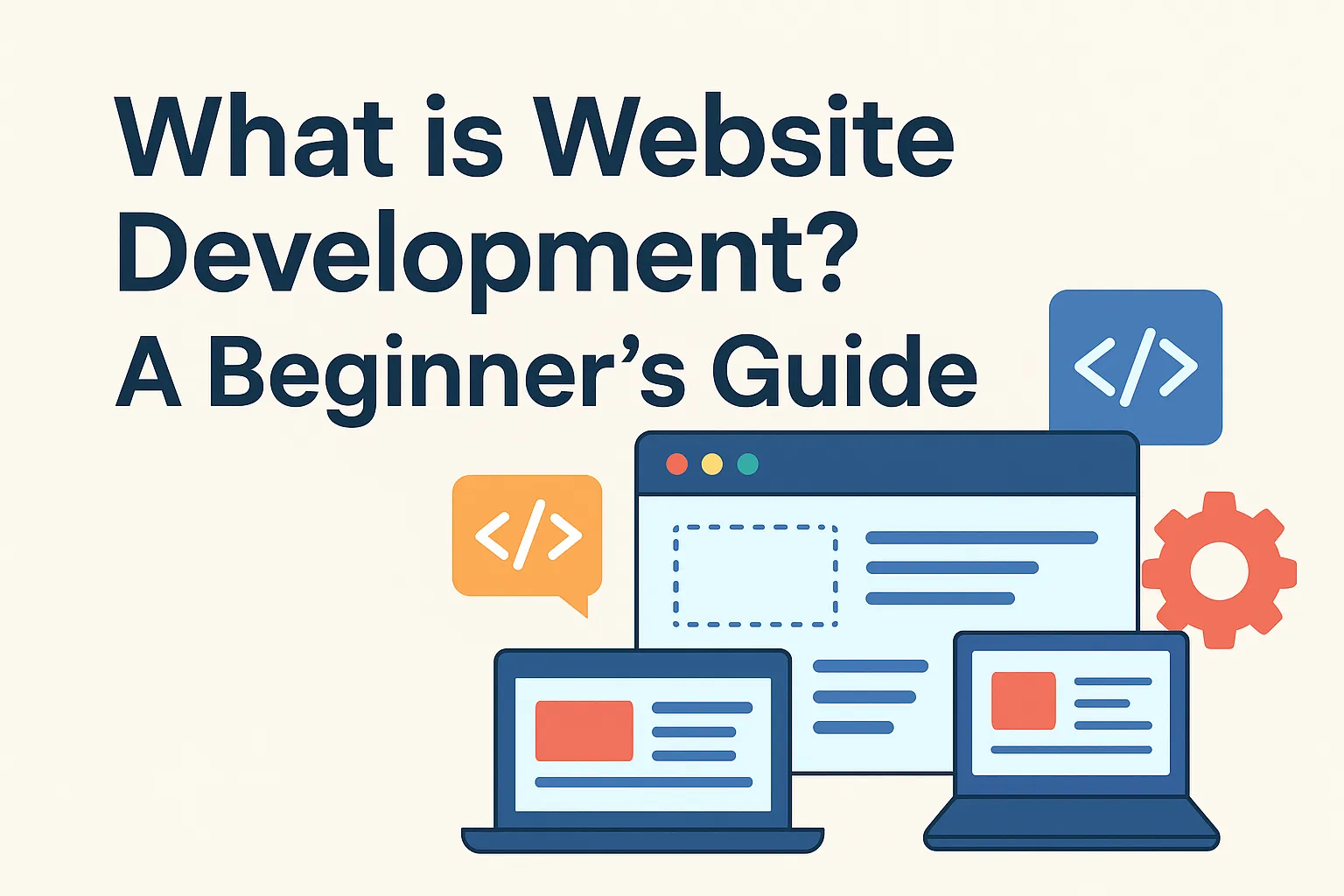Introduction
In today’s digital-first world, having a website is no longer optional — it’s essential. Whether you’re running a small business, starting a blog, or launching an e-commerce store, your website serves as your online identity. But have you ever wondered what goes into building a website? That’s where website development comes in. In this guide, we’ll walk you through the fundamentals of website development, its core components, tools, and why it’s such an important skill to learn in 2025 and beyond.
Understanding Website Development
Website development refers to the process of creating, building, and maintaining websites. It involves everything from writing code and designing user interfaces to configuring servers and ensuring your website runs smoothly on all devices.
In simple terms, it’s the technical backbone that powers what users see and interact with on their screens. Web development can range from creating a simple static page with HTML and CSS to building complex dynamic platforms like social media networks or e-commerce websites.
There are mainly three types of website development:
- Front-End Development – focuses on what users see (HTML, CSS, JavaScript).
- Back-End Development – deals with the server, databases, and application logic (PHP, Node.js, Python, etc.).
- Full-Stack Development – combines both front-end and back-end skills.
Key Components of Website Development
When developing a website, several components come together to create a functional, user-friendly experience:
- Domain Name & Hosting: Every website needs a domain name (like www.acesoftech.com) and a hosting service where the website files are stored.
- Front-End (Client Side): This includes HTML for structure, CSS for styling, and JavaScript for interactivity. It’s what users directly see and interact with.
- Back-End (Server Side): The back-end manages data, processes requests, and connects the website to databases. Common back-end technologies include PHP, Laravel, Node.js, Django, and ASP.NET.
- Database: Databases like MySQL, PostgreSQL, and MongoDB store all the data — from user profiles to product details.
- Content Management System (CMS): CMS platforms like WordPress, Joomla, and Drupal make it easy to build and manage websites without deep coding knowledge.
- APIs and Integrations: APIs allow websites to connect with third-party services such as payment gateways, analytics tools, and social media platforms.
The Website Development Process
Building a website involves several key stages, each crucial for ensuring a smooth user experience and effective functionality:
- Planning and Research: Define the website’s purpose, target audience, and goals. This step sets the foundation for design and functionality decisions.
- Designing the Layout: Create wireframes or mockups to visualize the website’s structure, navigation, and user interface.
- Front-End and Back-End Development: Developers write code for both the front-end (user interface) and back-end (server logic and database).
- Testing and Debugging: The site is tested for performance, compatibility, and security to fix any errors before launch.
- Deployment: Once testing is complete, the website goes live on a web server.
- Maintenance and Updates: Regular updates and security checks ensure smooth performance and user satisfaction.
Tools & Technologies for Website Development
Modern web development relies on a range of tools and technologies. Here are some popular ones:
- Front-End Tools: HTML5, CSS3, JavaScript, React, Vue.js, Bootstrap
- Back-End Tools: PHP, Node.js, Python, Laravel, Django, ASP.NET
- Databases: MySQL, MongoDB, PostgreSQL
- CMS Platforms: WordPress, Shopify, Wix, Joomla
- Version Control: Git & GitHub
- Design Tools: Figma, Adobe XD, Canva
These tools make the development process faster, more efficient, and easier to manage — especially for beginners.
Why Website Development Matters
Your website is often the first impression customers have of your brand. A well-developed website enhances:
- Credibility and trust
- User engagement
- Search engine visibility (SEO)
- Sales and conversions
- Accessibility and global reach
In today’s competitive online market, a professional website isn’t just an advantage — it’s a necessity. Businesses that invest in web development gain a strong digital presence, better performance, and higher customer satisfaction.
What You Should Know as a Beginner
- Learn the Basics First: Start with HTML, CSS, and JavaScript.
- Understand How the Web Works: Learn about domains, hosting, and servers.
- Practice Regularly: Build small projects like portfolios or simple blogs.
- Explore Frameworks and CMS: Try WordPress or Laravel once you’re comfortable.
- Keep Learning: Technology changes fast — stay updated with new tools and trends.
- Focus on User Experience (UX): A beautiful design means nothing without good usability.
Conclusion
Website development is both an art and a science — it blends creativity with technical skill to bring ideas to life on the web. For beginners, understanding how websites are structured and built opens the door to endless possibilities, from freelancing and e-commerce to building your own brand. Whether you want to create a personal blog or a large business platform, learning website development is an investment that will pay off for years to come.

